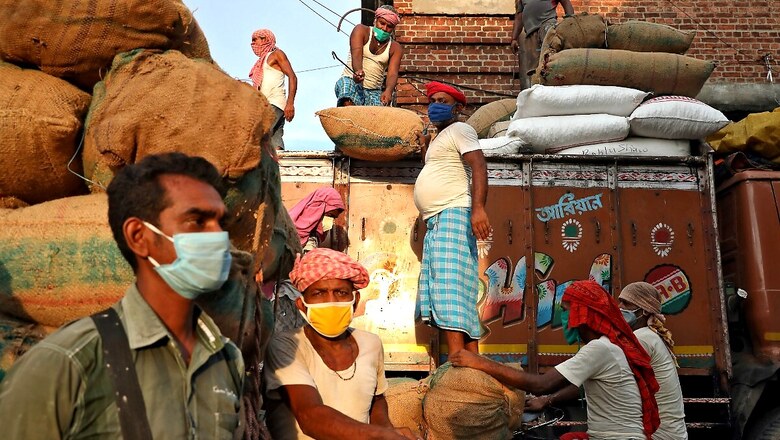Sero-Survey Reveals Size of Iceberg, Some Areas May be Nearing Herd Immunity: Veteran Epidemiologist

views
The sero-prevalence study in Delhi has shown that nearly a quarter of the national Capital’s population may have got infected with coronavirus and also developed immunity against it. Scientists have called this a promising sign indicating movement towards herd immunity. News18.com spoke to Professor Jayaprakash Muliyil, Chairman of the Scientific Advisory Committee, National Institute of Epidemiology, and former principal of Christian Medical College, Vellore, on the results of the study and what it reflects about the current stage of the coronavirus pandemic. Edited excerpts:
What do these results tell us about the spread of the infection in the national Capital and in general, about how the virus is behaving?
First of all, it is a random sample from a sampling frame. So when you do a random sample, it talks about the whole population. So, when the total population average is 23.5%, that means that 23.5% were already infected. Now they are immune to coronavirus and in my opinion that immunity will be long lasting. Number two, you have to understand that this is an average and averages never tell you exactly what is going on. So you have to make out how the clusters are doing. In cluster sampling, you can look at clusters and if the cluster size is reasonably big, you can ask the question - Is there high and low prevalence of sero-positivity in the cluster? That will describe the cluster nicely. The cluster size itself should be little more than 100 in each one.
Under the cluster, some will show 40% (positivity rate), some are 10% or 15%, and there is heterogeneity. Those in the range of 30-40% are fast approaching the herd immunity level in which case there will be no active transmission of the disease in those clusters and you will notice in those areas that new cases fall remarkably. Thirdly, the survey represents what happened a month back. After about two weeks only the IgG antibodies develop nicely. So the actual infection spread might be higher at present.
In my opinion, instead of looking at the new case direction in Delhi, we should look cluster by cluster. Each cluster will peak and reach herd immunity and cases will start dropping, this will eventually lead to the end of the epidemic.
What is cluster sampling, can you explain a bit?
You choose geographic clusters. It is convenient because some of that creates a little bit more homogeneity. Then you go to one ward and treat it as one cluster. You don’t need to cover every ward in Delhi, maybe randomly. To study the direction of the epidemic, you have to actually follow the clusters. For instance, Dharavi reached high levels of infection and now cases are dropping.
Likewise, if you follow cluster after cluster, you will understand if the epidemic has snuffed out itself. We can always take the credit, but it is done by the body’s immunity. If the density of immune people increases, then the pathway for the virus is cut and thus it starts declining. The R value in such clusters will also decline to a low level, but it is stable, the infection will still be smouldering but it will not be noticeable. We have many, many viruses. We don't notice since many are immune to them. But they are hovering, killing people occasionally.
Do you think the cities with high case load such as Mumbai and Chennai should also carry out such studies?
I will not give a prescription like this. Once it (infection) reaches high levels and the cases fall, you know they’re reaching herd (immunity) levels. So, some investigators and epidemiologists may be interested in these studies from a planning point of view. Your focus now should not be on screening but mainly on people who have got symptoms; fever, cough and breathlessness. They should be checked because the Covid-19 disease has a slightly different clinical management compared to pneumonia.
In Delhi, despite all the control measures, millions got infected. So any sensible person will conclude that our control measures did not work. We have now understood a few things. Our body is producing good immunity, is producing antibodies; millions of people are already protected. So, the disease has to come to an end for them, but it does not mean everybody is immune.
Later on, you will see small outbreaks. That is why it is good to have a vaccine to come around because half the population will be susceptible. If the virus is immunogenic, then the vaccine will also be immunogenic; if the virus is not immunogenic, vaccine won’t be immunogenic either. If the virus is stimulating a good immune response, naturally we can hope that the vaccine also will induce a good immune response.
So do you feel these studies are effective for practical strategies?
It has to be locality specific by and large. Though we all said a large number of people get infected and you don’t see them, nobody had believed it until this survey happened. Only when people saw this did they realize, ‘Oh my god’, so many millions of Delhiites got infected. We thought we were controlling it. That is nonsense and it is based on a small fraction. You were looking at the tip of the iceberg and now, after the survey, we can see the total size of the iceberg.
All the counts of the number of cases recovered are absolutely absurd, because the real picture is much larger. We are now getting to know the true extent of the spread of the infection.
What do we make of the immunity levels that people will attain?
There are two opinions on this. One is that everybody now agrees we have immunity and there is no confusion about it. Initially, there was discussion that there is immunity but not neutralising immunity. After that there is still a controversy around how long it lasts. Some believe it will last only a short time, people like me believe it will last long. For that you will have to wait for two to three years, to show it is protecting for a long time. Immunology is a very complicated subject and I don’t understand it fully, but I am an optimist and I think this will be good enough for us. In terms of the pandemic, I think we are seeing evidence that some of the areas are closing in on herd immunity.

















Comments
0 comment